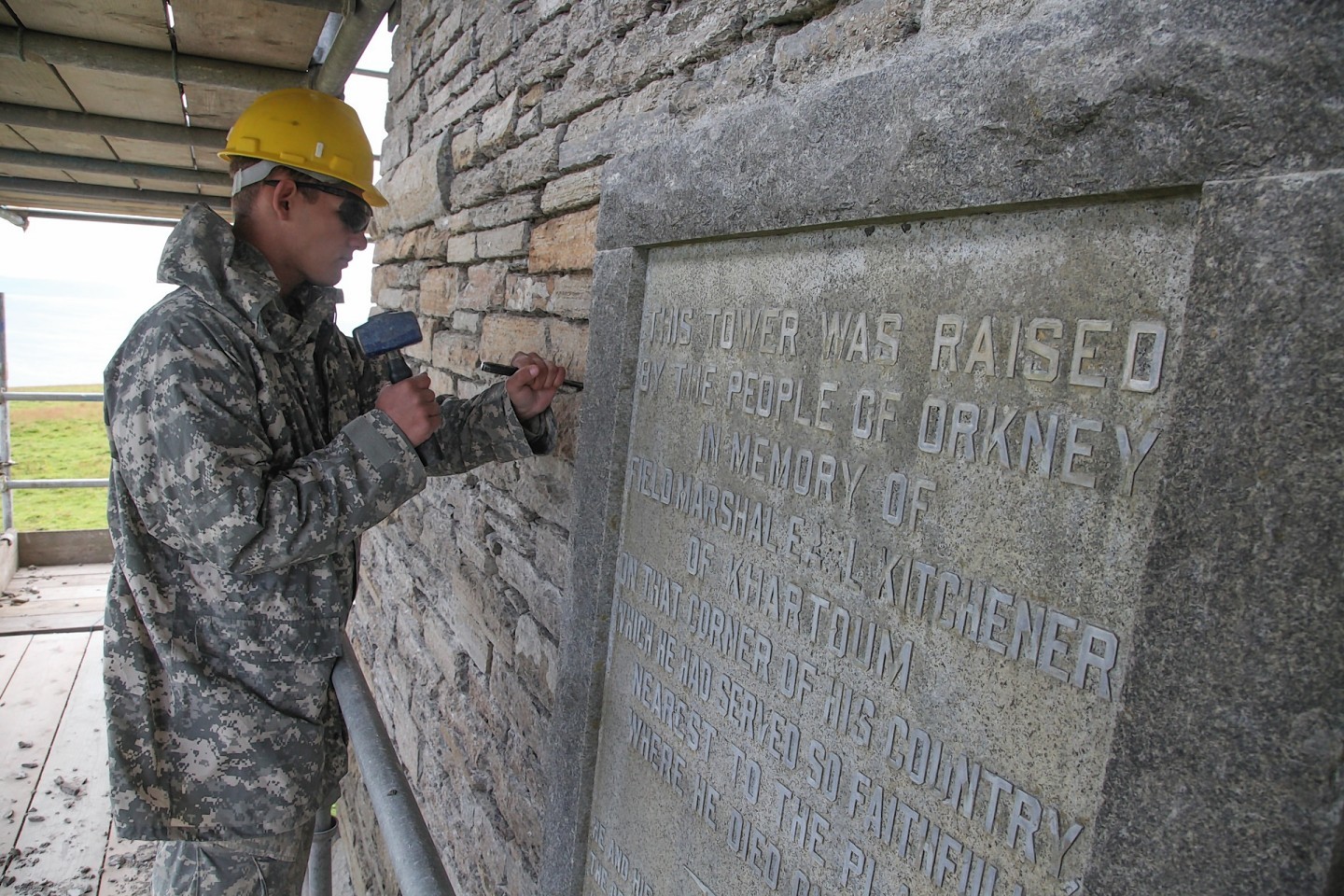Six north seamen killed when their Royal Navy vessel was sunk by German mines are to have their names added to an Orkney memorial honouring WWI colleagues who suffered the same fate days earlier.
HM Drifter The Laurel Crown was struck in the same minefield as HMS Hampshire, whose crew feature on a commemorative wall created by the Orkney Heritage Society.
The Hampshire sank near Orkney’s Atlantic coast on June 5, 1916 while heading for Russia. The casualties included the Secretary of State for War, Earl Kitchener.
On 22 June, the Laurel Crown, which was among an eight-vessel fleet en route to sweep for mines near the site of the disaster, also struck a mine. All on board perished.
The names of the crew will be added to the HMS Hampshire commemorative wall being created next to the Kitchener Memorial at Marwick Head.
According to the Commonwealth War Graves Commission, the crewmen included deckhands George Petrie, a 32-year-old married father from Burray, Orkney; Murdo Nicolson, 45, from Stornoway and Charles Durrant, 17, of Torry, Aberdeen; second hand Robert Slater, 30, of Portknockie, Banffshire and enginemen Robert Mitchell, 26, of Peterhead, and Thomas Baker who was later buried at Lyness Royal Naval Cemetery at Hoy, Orkney.
The Orkney Heritage Society’s Kitchener and HMS Hampshire memorial project, supported by the Birsay Heritage Trust, is a contribution to the WWI centenary.
Volunteers initially created a memorial wall for the 737 men lost when the Hampshire was sunk.
Its research has established that George Petrie enrolled into the Royal Naval Reserve at Kirkwall in May 1916.
He and four colleagues are commemorated on the Portsmouth Naval Memorial at Southsea Common in Hampshire. He is also remembered on a family gravestone at Burray.
Neil Kermode, chairman of the Orkney project, said: “We started wanting to ‘better remember’ the men who died alongside Earl Kitchener in 1916. It seems entirely fitting we should also commemorate those lost shortly afterwards on the Laurel Crown.”
